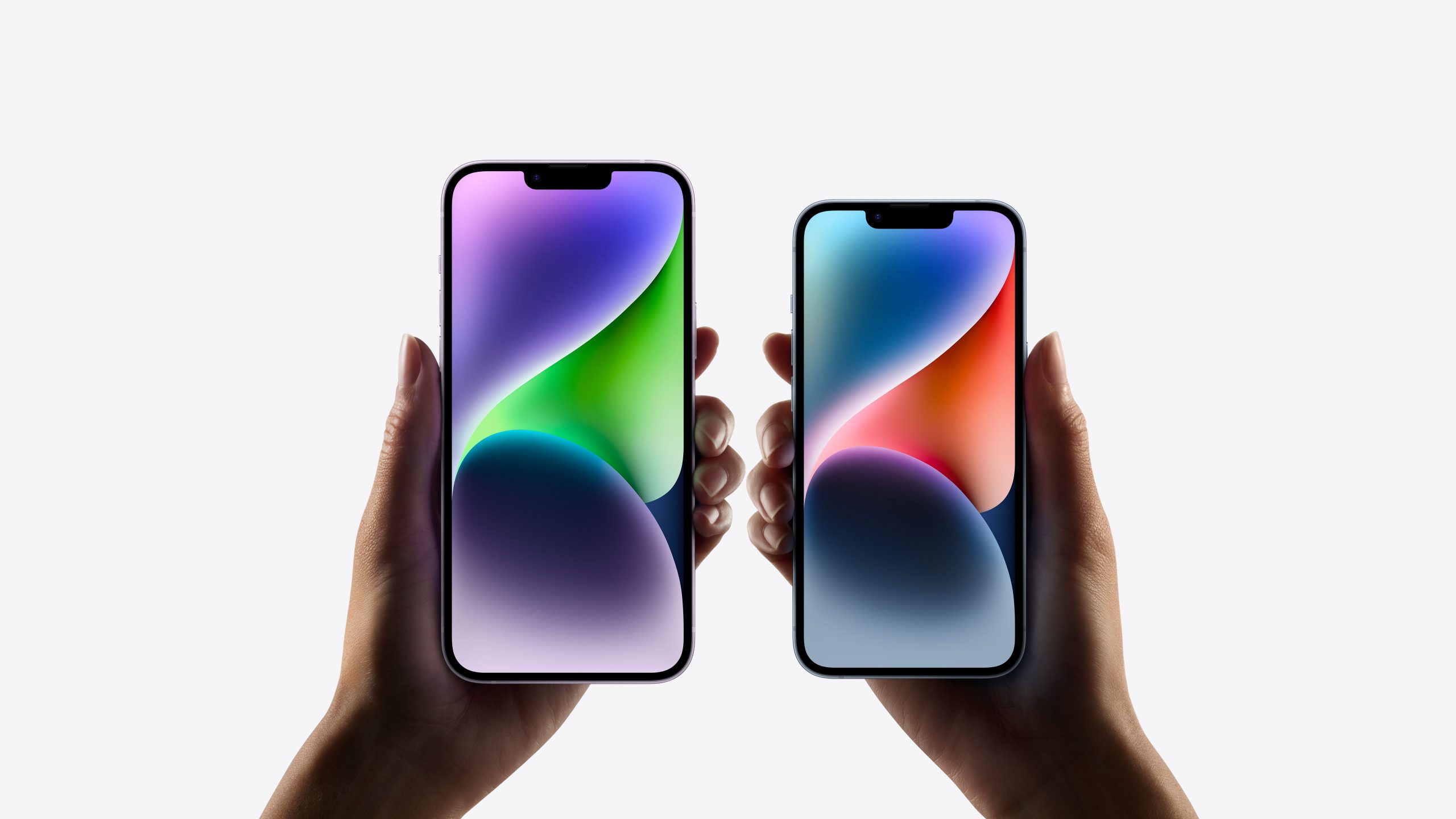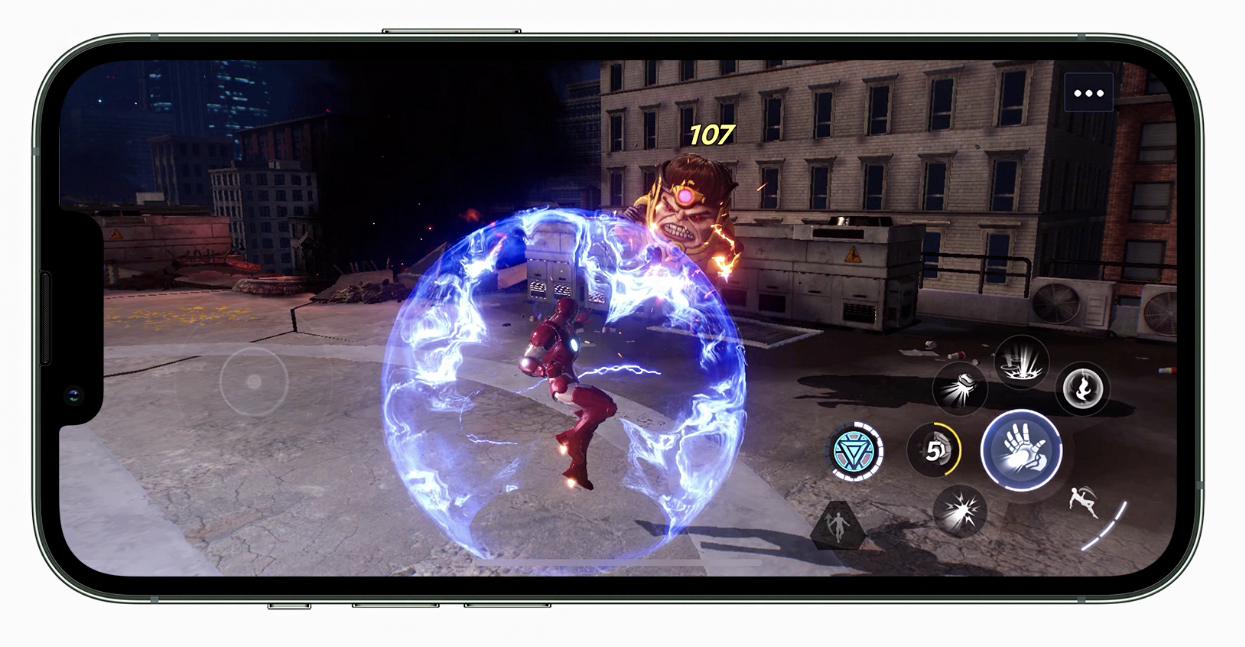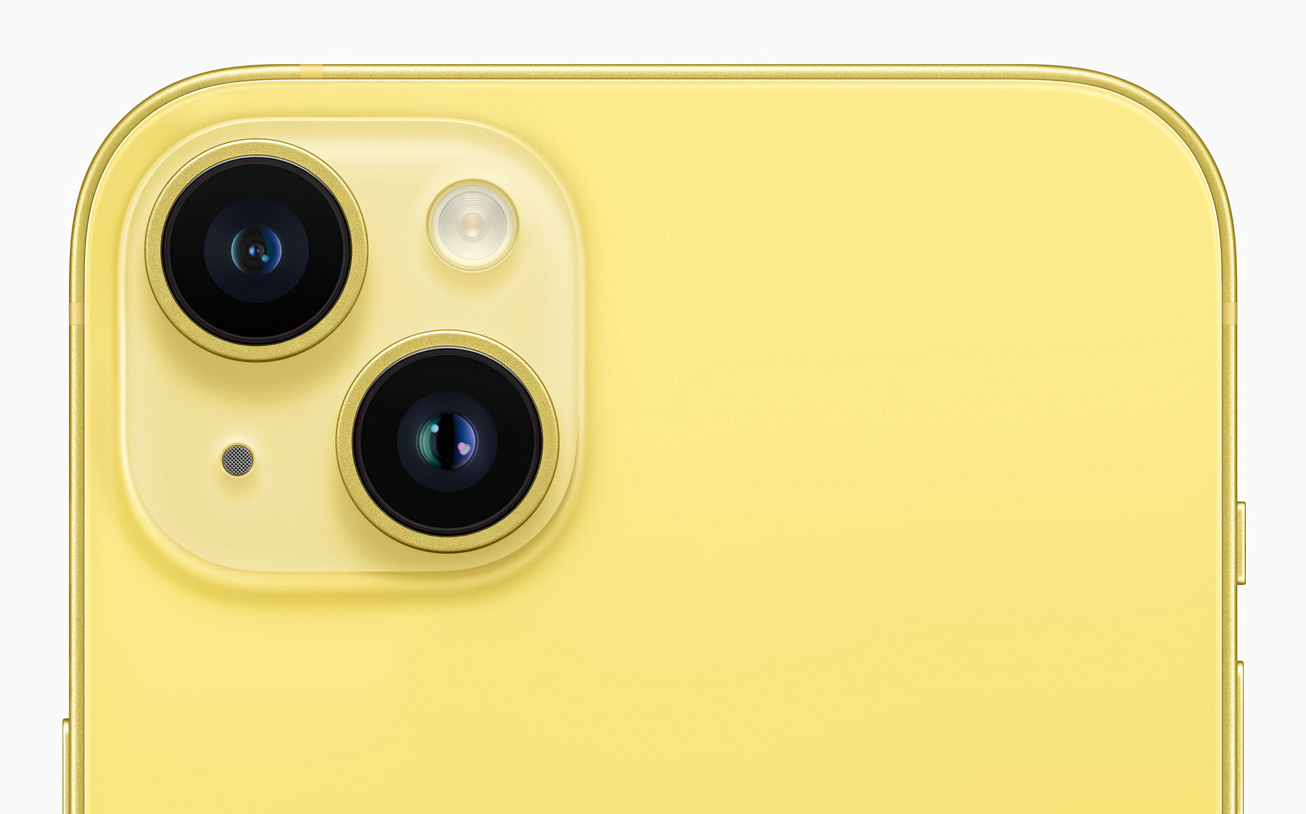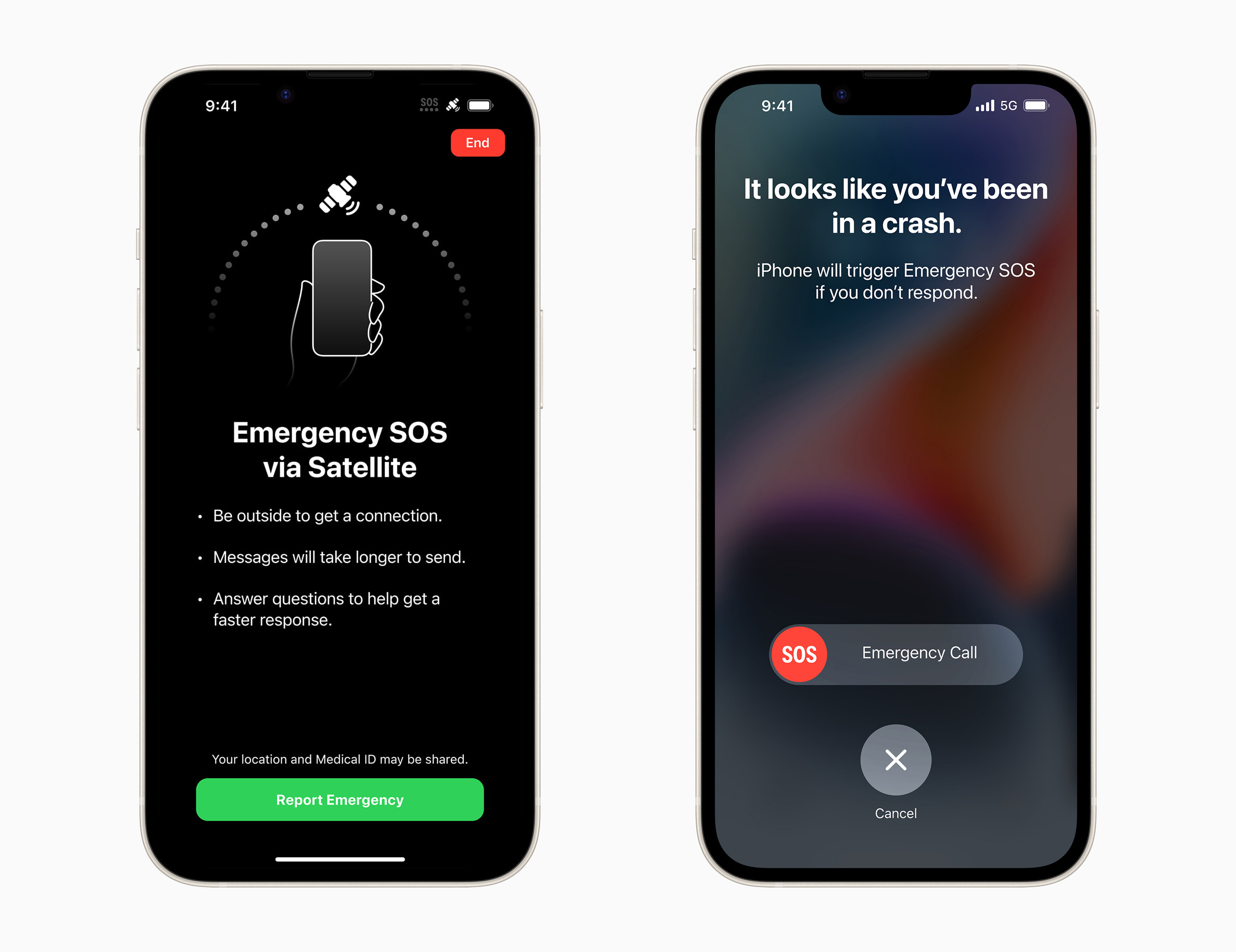Tablе of Content
The Apple iPhone 13 was released in 2021, while the Apple iPhone 14 came out in 2022. Both models are entry-level, designed for everyday use. They don’t differ as significantly from each other as the “base” and Pro versions do, but there are still distinctions. How crucial these differences are for you? Let’s delve into it.
Differences in Design
Firstly, let’s talk about the general aspects. Externally, the iPhone 13 and iPhone 14 have few differences. The bodies of both smartphones are made of aviation-grade aluminum. The frames are matte and do not gather fingerprints. The back panel is covered with glossy glass, and the screen is protected by the Ceramic Shield panel – a durable glass-ceramic that shields the display from damage. The camera block includes two lenses arranged diagonally.
And now, about the difference. iPhone 13 is available in two sizes: standard (which is the focus of this review) and mini. In the iPhone 14 lineup, Apple has abandoned the mini format and released standard and Plus versions. This means, if you want a small entry-level model, it’s the iPhone 13 mini. If you want an entry-level with a larger screen, then it’s the iPhone 14 Plus.

In the iPhone 13 and 14, the placement of the volume and power buttons differs slightly: they are shifted by just a couple of millimeters. Therefore, cases for one may not fit the other. The dimensions also vary slightly:
- iPhone 13: 146.7 x 71.5 x 7.65 mm. Weight – 173 grams.
- iPhone 14: 147 x 71.5 x 7.80 mm. Weight – 172 grams.
The body shades also have slight differences.
- iPhone 13 Colors: Starlight, Midnight, Product Red, Blue, Pink, Green.
- iPhone 14 Colors: Starlight, Midnight, Product Red, Blue, Purple, Yellow.

iPhone 14 vs. 13: Performance Comparison
Both smartphones are equipped with the Apple A15 Bionic chip featuring a 6-core CPU and a 16-core neural engine. However, the number of GPU cores differs: iPhone 13 has 4, while iPhone 14 has 5. There are also differences in the amount of RAM: iPhone 13 comes with 4 GB, whereas iPhone 14 has 6 GB. The internal storage capacities are the same: 128, 256, and 512 GB.
For some, these differences may seem significant, but for the majority of users, it’s unlikely to be a noticeable distinction. In performance tests, both smartphones show similar results, and in everyday use, you won’t observe a significant leap in power. Both iPhone 13 and iPhone 14 operate swiftly, smoothly, and efficiently handle tasks typical for mobile phones.

Autonomy
The battery endurance is almost identical: 3240 mAh in the iPhone 13 and 3279 mAh in the iPhone 14. This is sufficient for a full day of active usage.
Camera Capabilities
Both smartphones feature three cameras: one front-facing TrueDepth camera and two main cameras – a wide-angle and an ultra-wide-angle. The main camera captures images at 12 MP resolution. Both devices support optical image stabilization through sensor-shift, have Night mode and Portrait mode with 6 effects, as well as photographic styles.

And now, about the differences. The camera is the reason to consider ordering the iPhone 14. Unlike the iPhone 13, it features a more light-sensitive sensor with larger pixels, measuring 1.9 microns (compared to 1.7 microns in the iPhone 13). In simple terms, photos in low-light conditions come out better on the iPhone 14.
Both smartphones support Cinematic mode, but in the iPhone 14, it is available in 4K at 30 frames per second, whereas in the iPhone 13, it’s only available in 1080p.

The front camera in the iPhone 14 supports autofocus (while the iPhone 13 has fixed focus). This improvement will be appreciated by those who frequently shoot video selfies in the “talking head” format. Now, when you bring your face close to the camera and move away, the picture will remain sharp, and you will stay in focus.
Additionally, the iPhone 14 supports Action mode. This is a mode that stabilizes the image during handheld or motion video shooting. The technology software reduces shake, vibrations, and random movements.
It’s important to note that a more advanced camera in the iPhone 14 does not mean the iPhone 13 takes poor photos. Not at all. Both models capture vibrant and detailed photos and high-quality videos. Therefore, if you plan to use the camera for everyday life content, the capabilities of the iPhone 13 may be sufficient. However, if you are purchasing a smartphone to shoot content for platforms like TikTok, Reels, or other videos for a blog or commercial account, then it’s better to choose the 2022 model. In this case, the higher cost of the iPhone 14 is justified. And perhaps, it’s worth considering the “Pro” model: in the photo battle of “iPhone 14 vs. 14 Pro,” the flagship wins.


Display
The iPhone 13 and 14 are equipped with a superb but entirely identical 6.1-inch OLED display, featuring HDR10 support and a maximum brightness of up to 1200 nits. They share the same resolution of 2532 by 1170 pixels, a wide P3 color gamut, and TrueTone support. These are excellent specifications for a base smartphone in 2024.
Other Differences in iPhone 14
The specifications of the iPhone 14 are slightly broader than those of the iPhone 13. For example, the newer model supports satellite communication. Even without GSM and internet connectivity, it can contact emergency services. However, this feature may not work in all countries at the moment.
The iPhone 14 also features crash detection technology. In the event of a frontal, side, or rear collision, as well as if the vehicle overturns, the smartphone can detect a threat to human life and automatically call for rescuers. It provides a 20-second window for your reaction, reducing the chance of a false call.
Another difference in the iPhone 14 is the support for eSim instead of traditional SIM cards. Models without a physical slot for SIM cards are produced exclusively for the U.S. market.

Conclusion
Both the iPhone 13 and iPhone 14 are excellent base devices for everyday use: making calls (including video calls), web browsing, taking photos and videos, gaming, and more. They feature a vibrant display and outstanding battery life. Most people are unlikely to notice a significant difference between these devices, but it does exist.
The iPhone 14 comes with a more advanced camera, +1 core in the video accelerator, and +2 GB in RAM. Additionally, the model supports satellite communication and crash detection. For some, these features may not be enough to justify the additional cost, while for others, it might be a reason to opt for the iPhone 14.
Cost of iPhone 13 and iPhone 14
The price of the iPhone 13 depends on its storage capacity, starting from 309,900 AMD for the model with 128 GB at iSpace stores.
The cost of the iPhone 14 is 357,900 AMD for the 128 GB model. The 256 GB model is priced at 409,900 AMD, and the 512 GB model at 509,900 AMD.
At iSpace, you can buy the iPhone 13 or iPhone 14 in installments or on credit.
Purchase online with delivery across Armenia or visit our stores:
Amiryan 7, Yerevan
+374 95 099 045
Mon-Sun 10:00 – 22:00
Rio Mall 1st floor, Yerevan
+374 41 099 040
Mon-Sun 10:00 – 22:00
READ ALSO:
What’s better: iOS or Android? Pros and Cons
iPhone 14 vs iPhone 15: Is it worth upgrading, and what are the differences?
5 reasons not to buy a ‘gray’ iPhone: real reviews
Subscribe to the newsletter and be the first to know about new promotions and special offers
